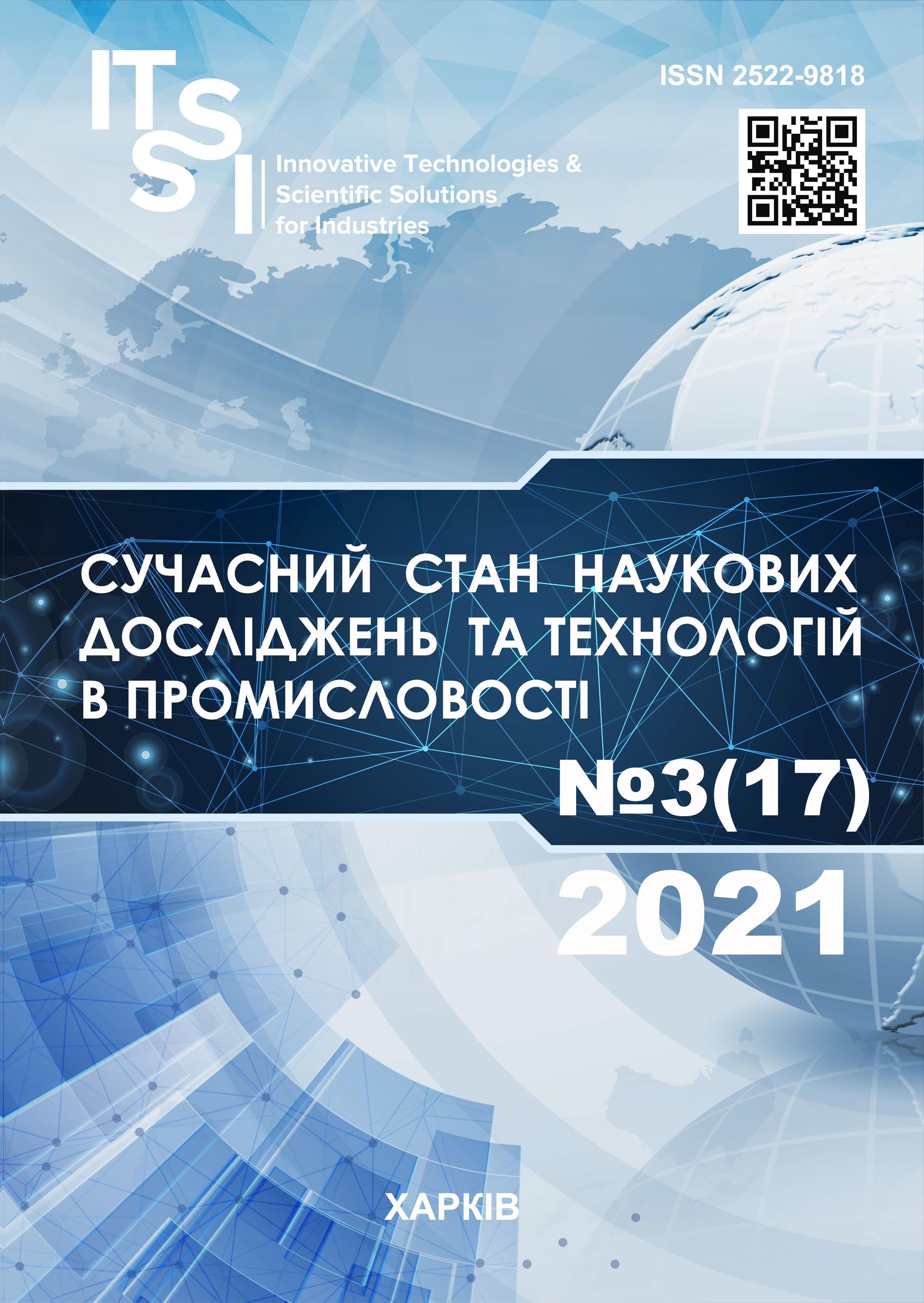DEVELOPMENT OF A MODEL FOR THE DYNAMICS OF PROBABILITIES OF STATES OF SEMI-MARKOV SYSTEMS
DOI:
https://doi.org/10.30837/ITSSI.2021.17.062Keywords:
Semi-Markov system, model of dynamics of probabilities of states, approximating Erlang distributions, analytical calculation of probabilities of statesAbstract
The subject is the study of the dynamics of probability distribution of the states of the semi-Markov system during the transition process before establishing a stationary distribution. The goal is to develop a technology for finding analytical relationships that describe the dynamics of the probabilities of states of a semi-Markov system. The task is to develop a mathematical model that adequately describes the dynamics of the probabilities of the states of the system. The initial data for solving the problem is a matrix of conditional distribution laws of the random duration of the system's stay in each of its possible states before the transition to some other state. Method. The traditional method for analyzing semi-Markov systems is limited to obtaining a stationary distribution of the probabilities of its states, which does not solve the problem. A well-known approach to solving this problem is based on the formation and solution of a system of integral equations. However, in the general case, for arbitrary laws of distribution of the durations of the stay of the system in its possible states, this approach is not realizable. The desired result can only be obtained numerically, which does not satisfy the needs of practice. To obtain the required analytical relationships, the Erlang approximation of the original distribution laws is used. This technique significantly increases the adequacy of the resulting mathematical models of the functioning of the system, since it allows one to move away from overly obligatory exponential descriptions of the original distribution laws. The formal basis of the proposed method for constructing a model of the dynamics of state probabilities is the Kolmogorov system of differential equations for the desired probabilities. The solution of the system of equations is achieved using the Laplace transform, which is easily performed for Erlang distributions of arbitrary order. Results. Analytical relations are obtained that specify the desired distribution of the probabilities of the states of the system at any moment of time. The method is based on the approximation of the distribution laws for the durations of the stay of the system in each of its possible states by Erlang distributions of the proper order. A fundamental motivating factor for choosing distributions of this type for approximation is the ease of their use to obtain adequate models of the functioning of probabilistic systems. Conclusions. A solution is given to the problem of analyzing a semi-Markov system for a specific particular case, when the initial distribution laws for the duration of its sojourn in possible states are approximated by second-order Erlang distributions. Analytical relations are obtained for calculating the probability distribution at any time.
References
Dynkin, E. B. (1963), Markov processes [Markovskiye protsessy], Moscow : Fizmatgiz, 583 p.
Barucha-Reed, A. T. (1969), Elements of the theory of Markov processes and their applications [Elementy teorii markovskikh protsessov i ikh prilozheniya], Moscow : Nauka, 248 p.
Kemeny, J., Snell, J. (1970), Markov's ultimate goals [Konechnyye tseli Markova], Moscow : Nauka, 208 p.
Silvestrov, D. S. (1971), Semi-Markov processes with a discrete set of states [Polumarkovskiye protsessy s diskretnym mnozhestvom sostoyaniy], Kyiv : KNU, 186 p.
Barlow, R. E. (1962), "Applications of semi-Markov processes to counter problems", Stud. appl. prob. Stanford, Calif. Univ. Press, P. 34–62.
Korolyuk, V. S. (1967), "Semi-Markov processes and their applications" ["Polumarkovskiye protsessy i ikh prilozheniya"], Cybernetics, No. 5, P. 58–65.
Korolyuk, V. S., Brody, S. M., Turbin, A. F. (1974), "Semi-Markov processes and their application" ["Polumarkovskiye protsessy i ikh primeneniye"], Results of science and technology. Ser. Theor. ver. Mat. Stat., Vol. II, P. 47–97.
Ventzel, E. S., Ovcharov, L. A. (1983), Applied Problems of Probability Theory [Prikladnyye zadachi teorii veroyatnostey], Moscow : Radio and Communication.
Pugachev, V. S. (1962), The theory of random functions [Teoriya sluchaynykh funktsiy], Moscow : Fizmatgiz, 659 p.
Kofman, A., Kruon, R. (1965), Mass service, theory and applications [Massovoye obsluzhivaniye, teoriya i prilozheniya], Moscow : MIR, 302 p.
Raskin, L. G. (1988), Mathematical methods for researching operations and analyzing complex systems [Matematicheskiye metody issledovaniya operatsiy i analiza slozhnykh sistem], Kharkiv : VIRTA, 178 p.
Zadeh, L. (1965), "Fuzzy Sets", Information and Control, Vol. 8, P. 338–353.
Pawlak, Z. (1997), "Rough Sets approach to knowledge–based decision support", European Journal of Operation Research, Vol. 99, No. 1, P. 48–57.
Raskin, L., Sira, O. (2016), "Fuzzy models of rough mathematics", Eastern-European Journal of Enterprise Technologies, Vol. 6, Issue 4, P. 53–60. DOI: 10.15587/1729-4061.2016.86739
Raskin, L., Sira, O. (2016), "Method of solving fuzzy problems of mathematical programming", Eastern-European Journal of Enterprise Technologies, Vol. 5, Issue 4, P. 23–28. DOI: 10.15587/1729-4061.2016.81292
Downloads
Published
How to Cite
Issue
Section
License

This work is licensed under a Creative Commons Attribution-NonCommercial-ShareAlike 4.0 International License.
Our journal abides by the Creative Commons copyright rights and permissions for open access journals.
Authors who publish with this journal agree to the following terms:
Authors hold the copyright without restrictions and grant the journal right of first publication with the work simultaneously licensed under a Creative Commons Attribution-NonCommercial-ShareAlike 4.0 International License (CC BY-NC-SA 4.0) that allows others to share the work with an acknowledgment of the work's authorship and initial publication in this journal.
Authors are able to enter into separate, additional contractual arrangements for the non-commercial and non-exclusive distribution of the journal's published version of the work (e.g., post it to an institutional repository or publish it in a book), with an acknowledgment of its initial publication in this journal.
Authors are permitted and encouraged to post their published work online (e.g., in institutional repositories or on their website) as it can lead to productive exchanges, as well as earlier and greater citation of published work.














